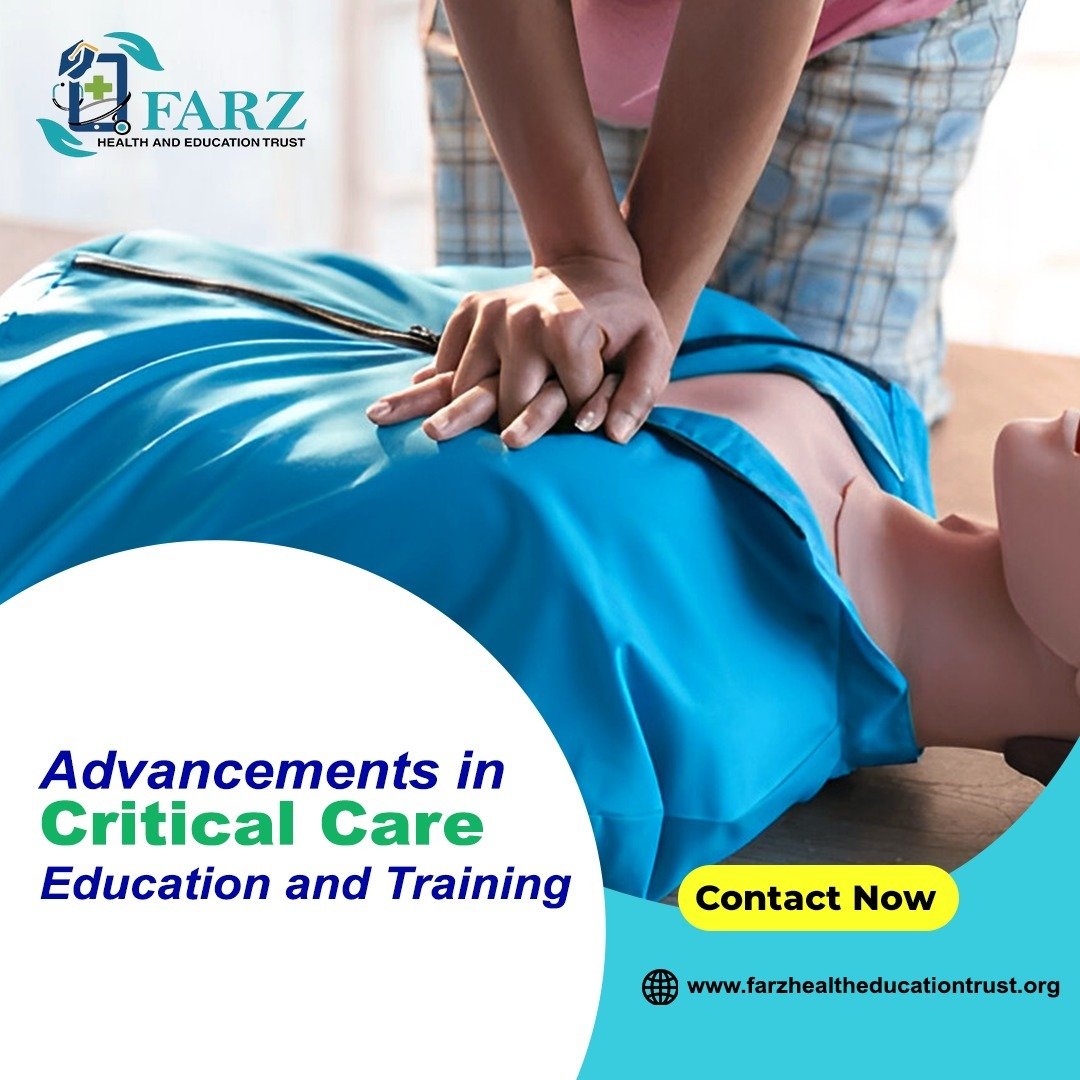
Introduction:
The landscape of critical care is rapidly evolving, and staying up-to-date with the latest advancements in education and training is key to ensuring that healthcare professionals are equipped to handle the complexities of life-threatening situations. At Farz Health & Education Trust, we are committed to providing innovative training programs that empower healthcare providers to deliver the highest level of care to their patients.
Here are some of the most important advancements in critical care education and training:
1. Simulation-Based Learning: Real-World Experience in a Safe Environment:
- Realistic Simulations: Advanced simulation technology allows healthcare providers to practice complex procedures and decision-making in a risk-free environment.
- Emergency Scenarios: Realistic emergency situations, including trauma, cardiac arrest, and respiratory failure, help improve readiness for high-stress situations.
- Teamwork & Communication: These simulations emphasize the importance of collaboration and effective communication among medical teams during critical situations.
Innovations in Critical Care Monitoring and Diagnostics
2. Virtual and Augmented Reality (VR/AR) Training:
- Immersive Learning: VR/AR tools are revolutionizing medical education by allowing practitioners to visualize anatomy and perform procedures in a virtual setting.
- Enhanced Understanding: Healthcare professionals can gain a deeper understanding of human anatomy and pathophysiology, improving their diagnostic and treatment skills.
- Remote Training: VR and AR offer the potential for remote learning, allowing healthcare professionals in rural areas or developing countries to access high-quality training resources.
3. Online Learning Platforms & E-Learning Modules:
- Flexibility: E-learning platforms allow healthcare professionals to take courses at their own pace and convenience, making it easier to fit education into their busy schedules.
- Access to Expert Knowledge: Online courses offer access to the latest evidence-based practices and expert instructors, regardless of geographical location.
- Interactive Learning: Many e-learning modules include interactive quizzes, case studies, and video demonstrations to enhance understanding and retention.
4. Continuous Professional Development (CPD) Programs:
- Ongoing Education: CPD programs ensure that healthcare providers are constantly improving their skills, staying current with medical advancements, and adhering to best practices.
- Certifications & Specializations: Many programs offer certifications and specialized training in areas such as intensive care, trauma, and neonatal care.
- Collaborative Learning: CPD programs often include peer interactions and collaborative learning opportunities, encouraging knowledge exchange and shared experiences.
5. Evidence-Based Medicine (EBM) Integration in Training:
- Data-Driven Decisions: EBM ensures that healthcare providers rely on the most current and reliable research to guide clinical decision-making in critical care.
- Better Patient Outcomes: Training programs that focus on EBM help clinicians apply research findings to practice, leading to improved patient outcomes and reduced errors.
- Critical Thinking: EBM emphasizes the importance of critical thinking and the ability to analyze and apply clinical evidence in real-time.
6. Global Collaboration & International Standards:
- Shared Knowledge: Healthcare organizations around the world are collaborating more than ever to share training resources, expertise, and best practices.
- Global Training Programs: Many institutions now offer international certifications and programs, ensuring that medical professionals meet global standards of care.
- Cultural Competence: Global collaborations help healthcare providers better understand and address the diverse needs of patients from different cultural backgrounds.
The Impact of Smoking on Lung Health: A Wake-Up Call for All Smokers
7. Advances in Telemedicine and Remote Critical Care:
- Remote Monitoring: Telemedicine allows healthcare providers to monitor patients remotely, improving access to care and enhancing patient outcomes.
- TeleICU: Remote ICU services are becoming more common, enabling specialists to provide care and guidance to healthcare providers in underserved areas.
- Real-Time Consultation: Remote consultations with critical care experts ensure that healthcare teams can make timely, informed decisions in critical situations.
Conclusion: Shaping the Future of Critical Care Education
As the healthcare landscape continues to change, critical care education and training must evolve to meet the challenges of modern medicine. These advancements are transforming the way we prepare healthcare professionals, improving patient outcomes, and ensuring that we have the knowledge and skills to provide the highest quality of care in the most challenging situations.
At Farz Health & Education Trust, we are dedicated to ensuring that healthcare professionals are equipped with the tools, knowledge, and training they need to excel in critical care. Together, we can shape the future of healthcare and improve the lives of patients everywhere.
